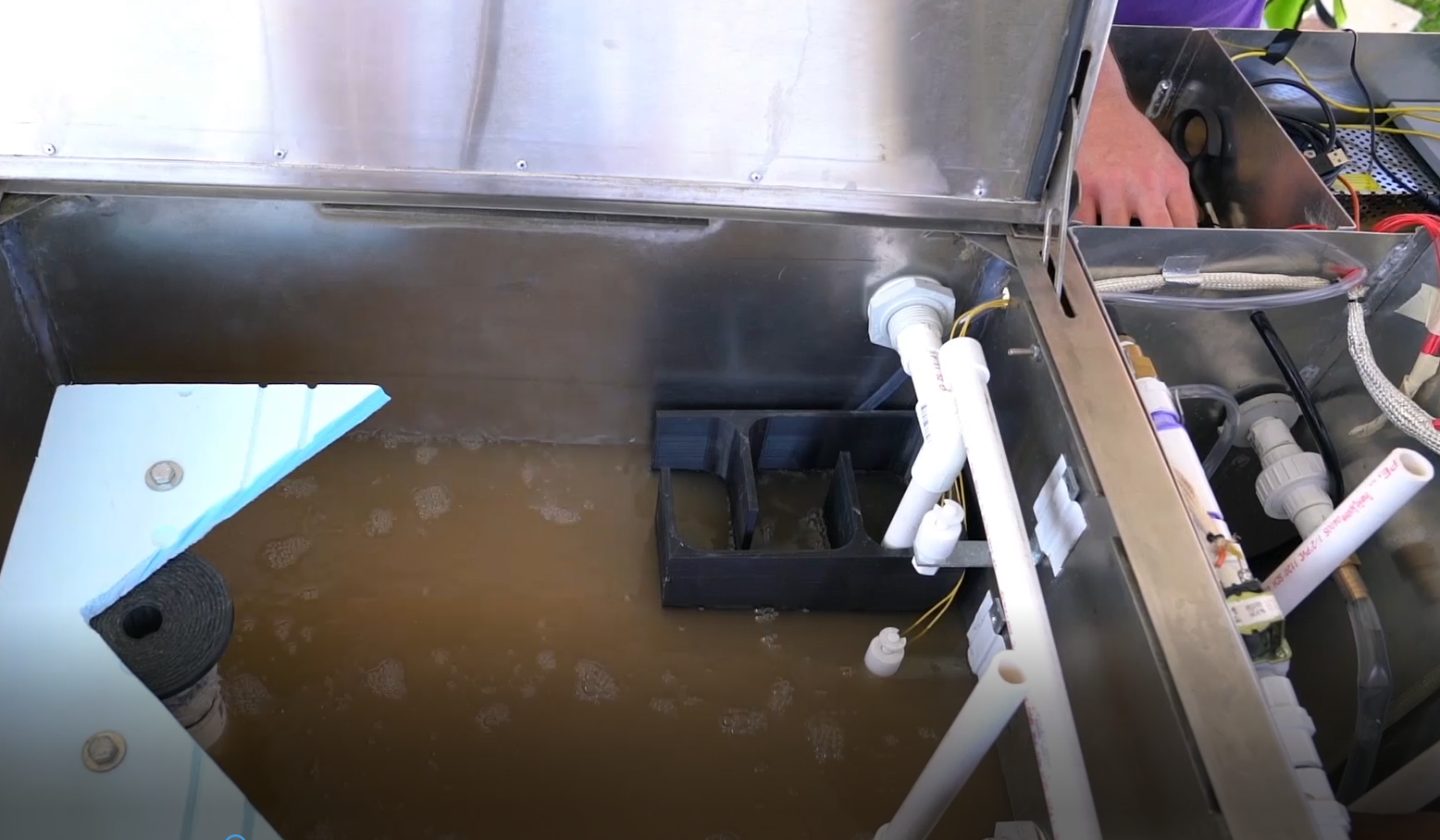Students Design Greywater Recycling System for Drought Plagued Countries
Challenged with designing a solution to a humanitarian aid issue, mechanical engineering major, Aasav Harania, has first-hand experience with an issue plaguing his home country of Kenya – water shortages.
For years, Kenyans have become used to normal drought seasons, but with climate change increasing the likelihood of droughts and increasing water costs in Africa, water recycling is in dire need.
With Harania’s inspiration, Yohan Auguste , Erik Hauge, Joseph Heffer, Jui Yi Kang, Sultan AlShehhi and Amer Alhammad teamed up for their student design project to create a sustainable water recycling system, known as SWR.
The system runs household wastewater through a series of three filters and is able to recycle 46% of the home’s water into greywater which is non-potable water that can be used to replenish toilet tanks and provide water for irrigation.
The team designed SWR with the user in mind. The greywater recycling station can be built from recycled aluminum and common PVC fittings. The team designed a system that can be easily replicated with limited technical skills and built with supplies that Kenyans have access to.
The team’s goal was to reduce the water’s turbidity (cloudiness) to the same standards as California requires. This was accomplished by their three filter system.
The water first enters the sedimentation tank where the larger particulates settle at the bottom while oil and scum rises to the top. The water then flows into the particulate tank, where small particulate matter is filtered out and goes into a reservoir. Once the reservoir is full, the pump will push the water through the last filtering stage – the bio-organic filter.
The bio-organic filter not only reduces turbidity, but suspended particulate as well as pathogens. This filter includes a ceramic water filter candle coupled with activated carbon. Activated carbon is the same material used to filter fish tank water and ceramic candle filter have micro-scale pores that traps bacteria and prevents the growth of mold and algae in the filter.
Once the water has gone through all three filters, it is stored and later used for other non-potable household water uses.

The team’s main objective with the system was to create usable greywater, they also went a bit farther to test the system’s ability to remove bacteria. To measure how much bacteria could be removed with their system, the team employed a glow in the dark bacteria marker known as glow germ.
Using a black light, the team was able to get a visual understanding of how much bacteria was being removed as the water went through each filtering system.
Their hard work paid off, the team took home the Northrop Grumman award for engineering at the 2018 Northrop Grumman Engineering & Science Design Showcase.





